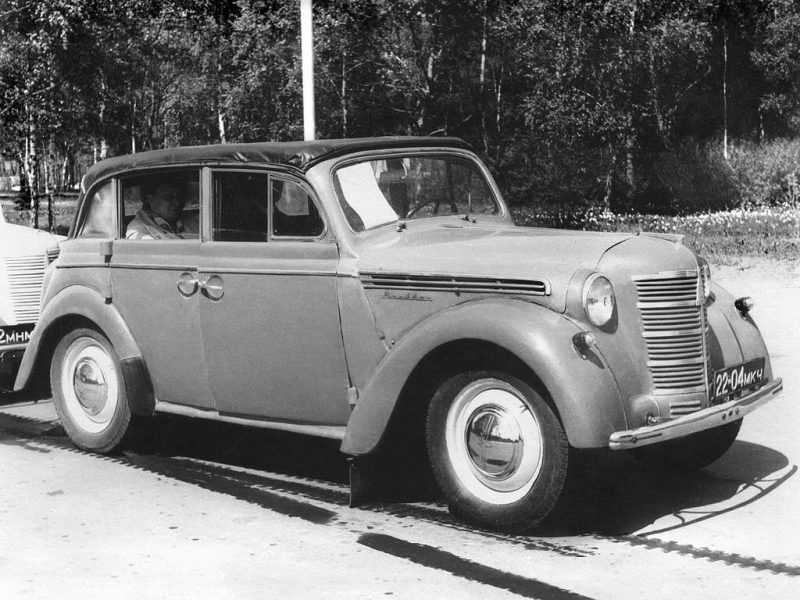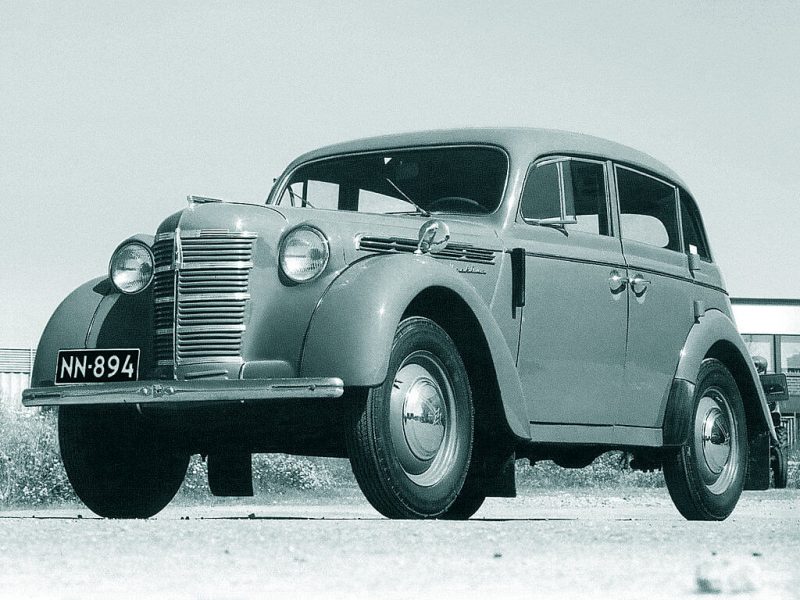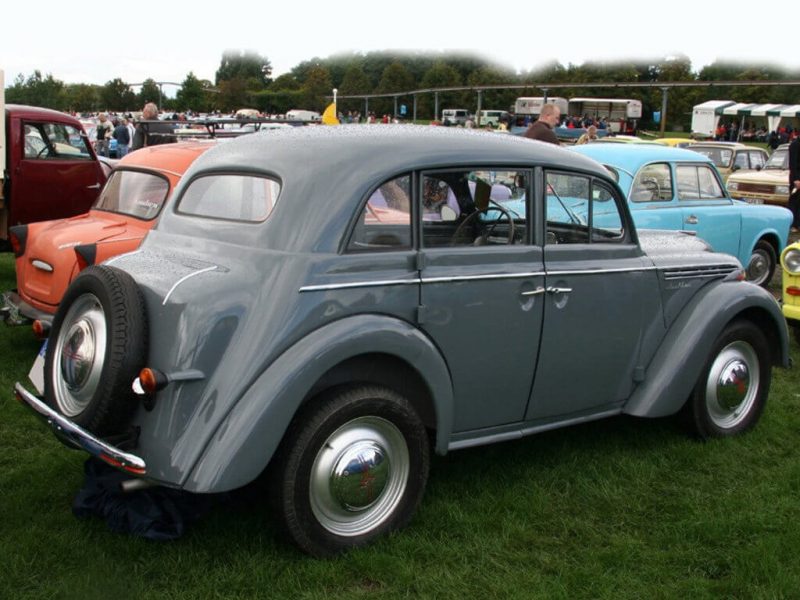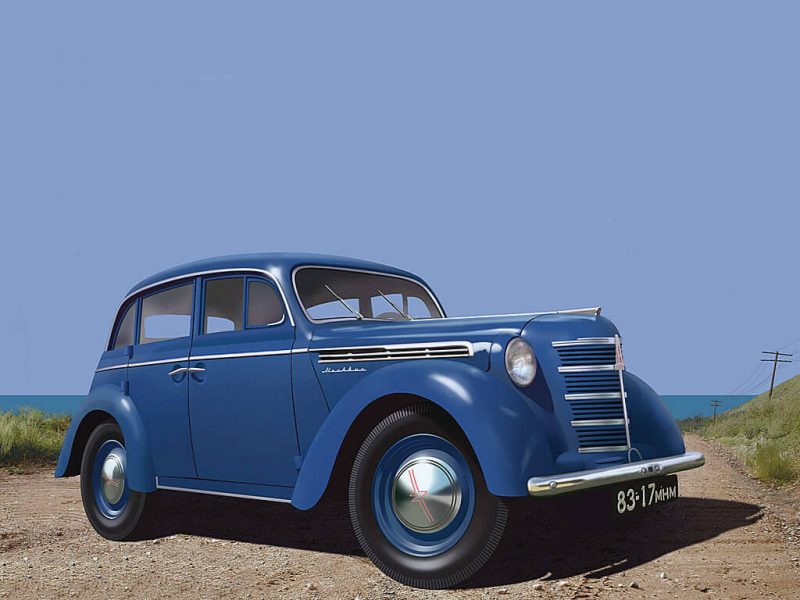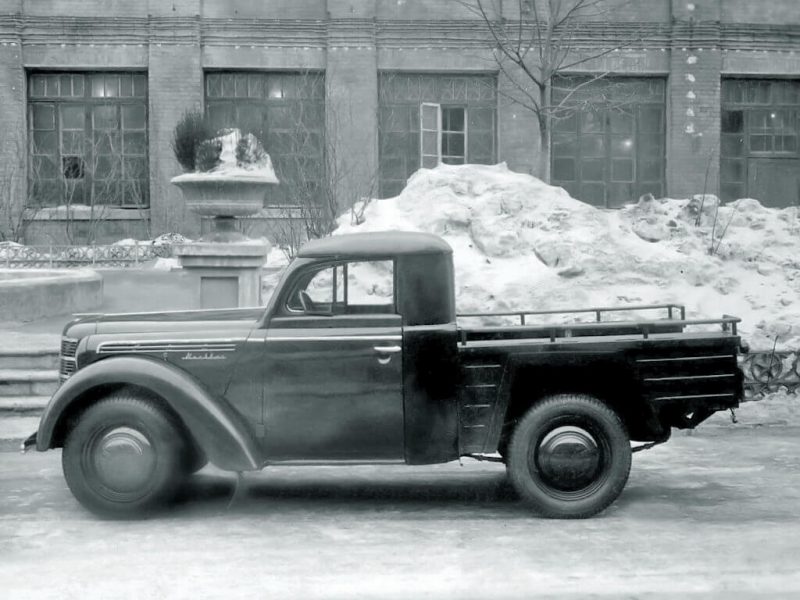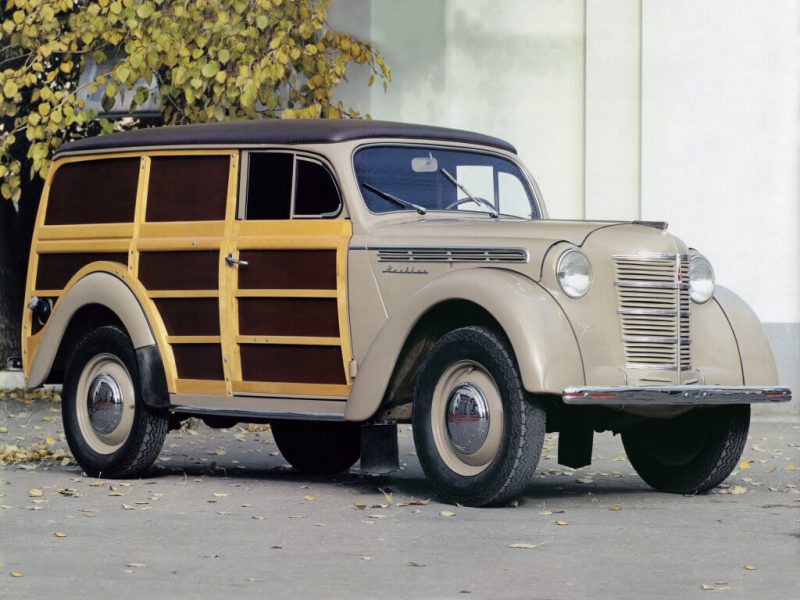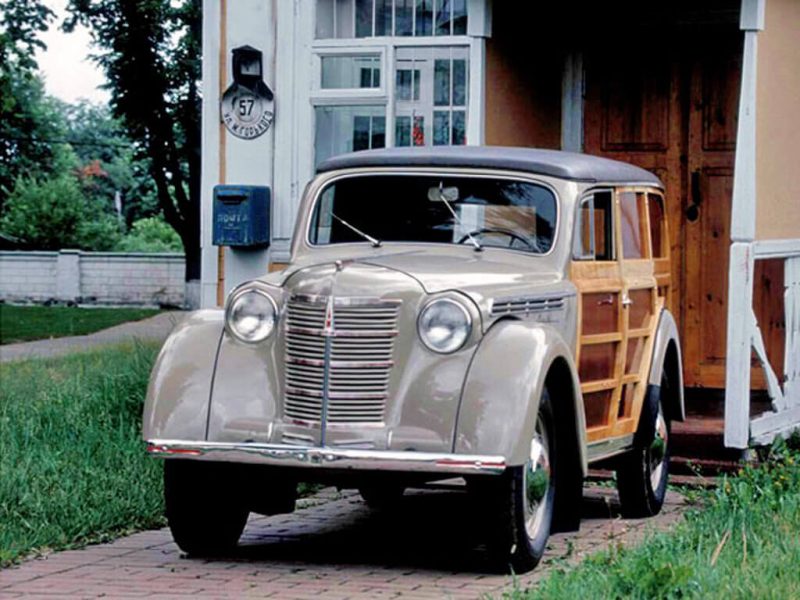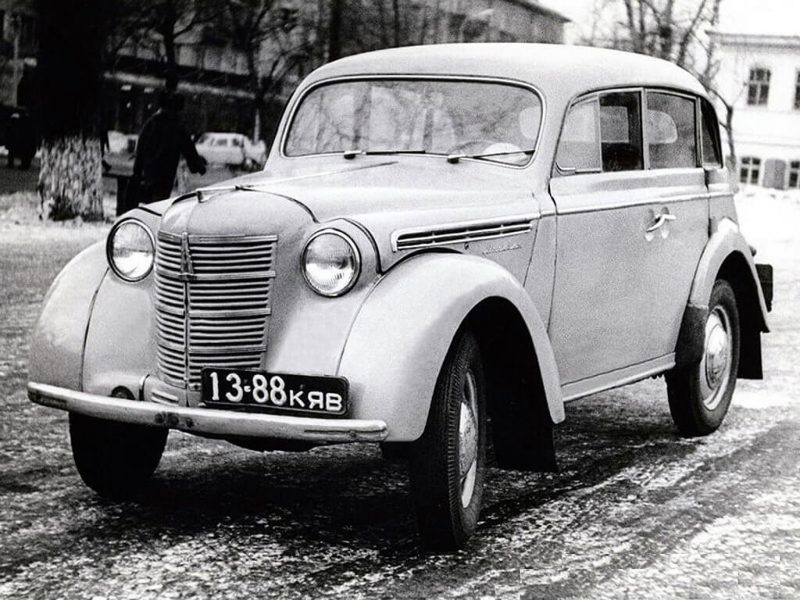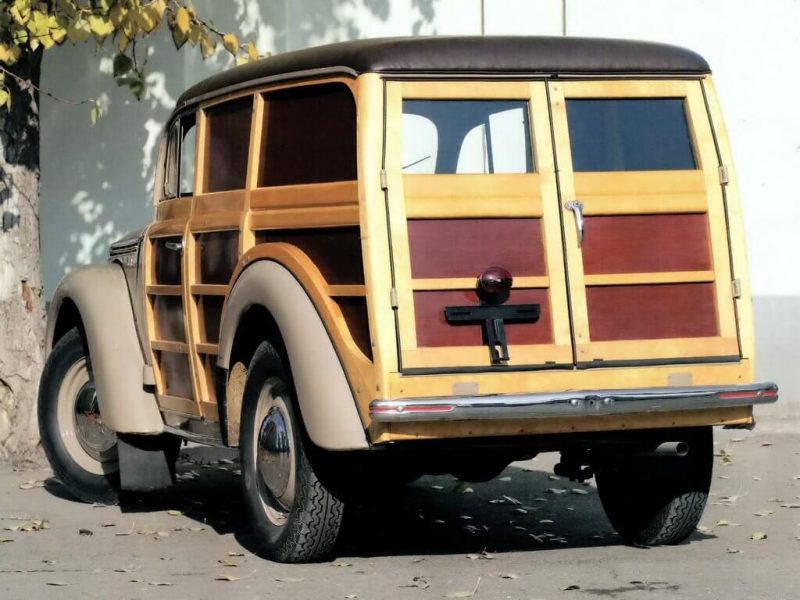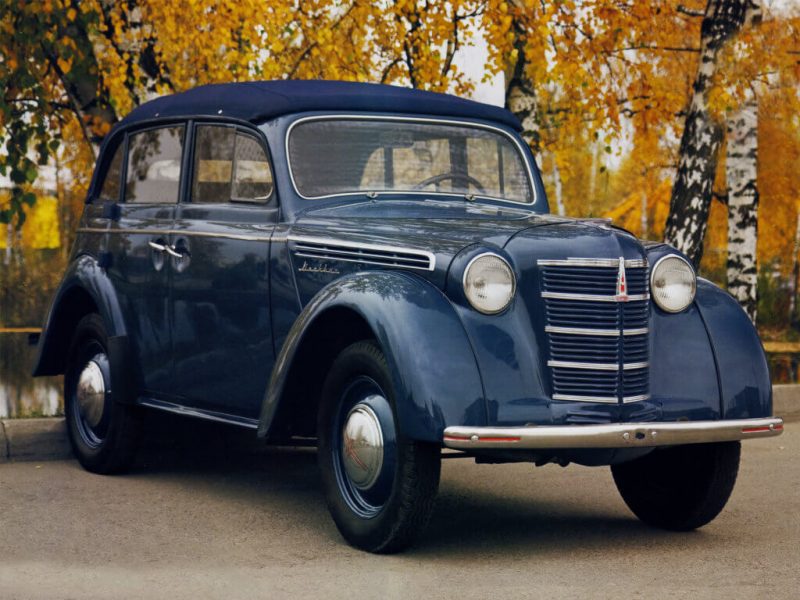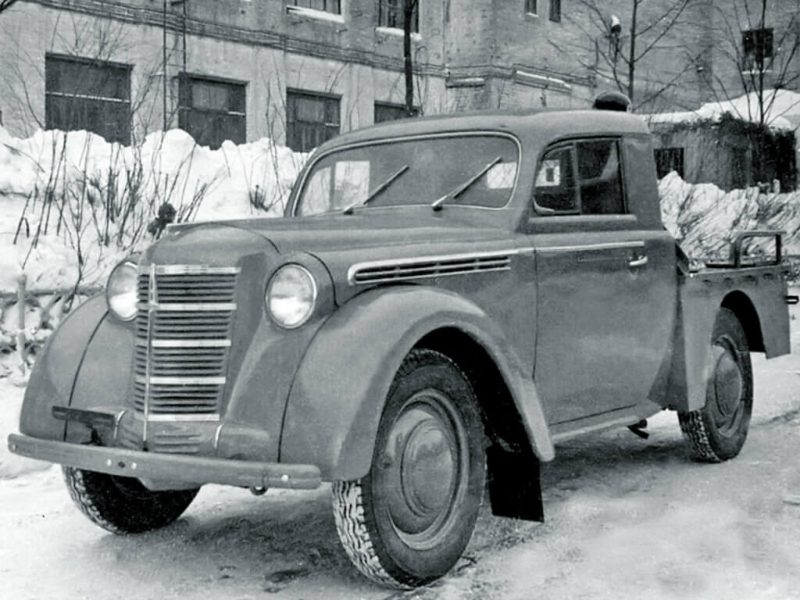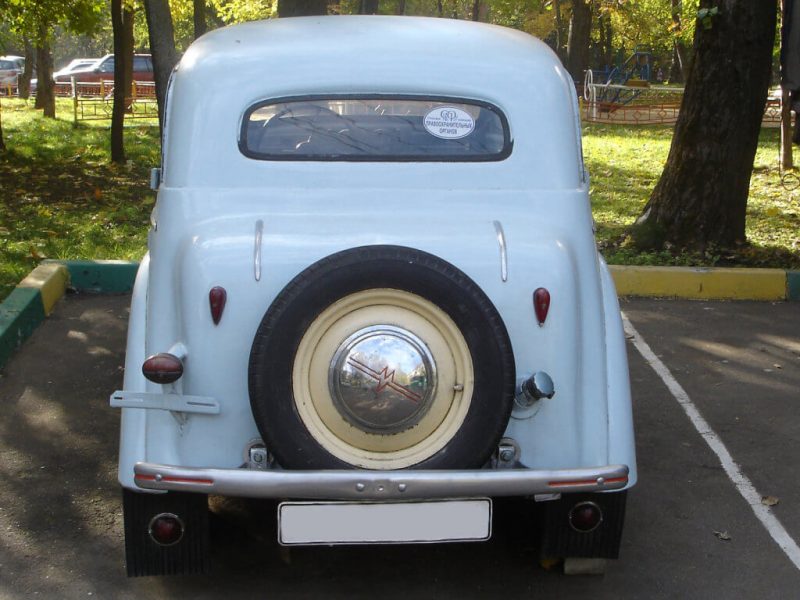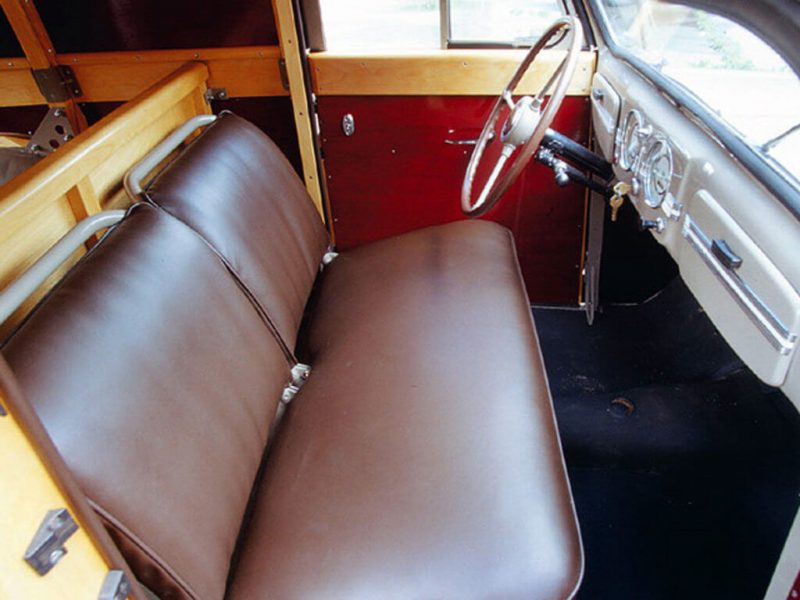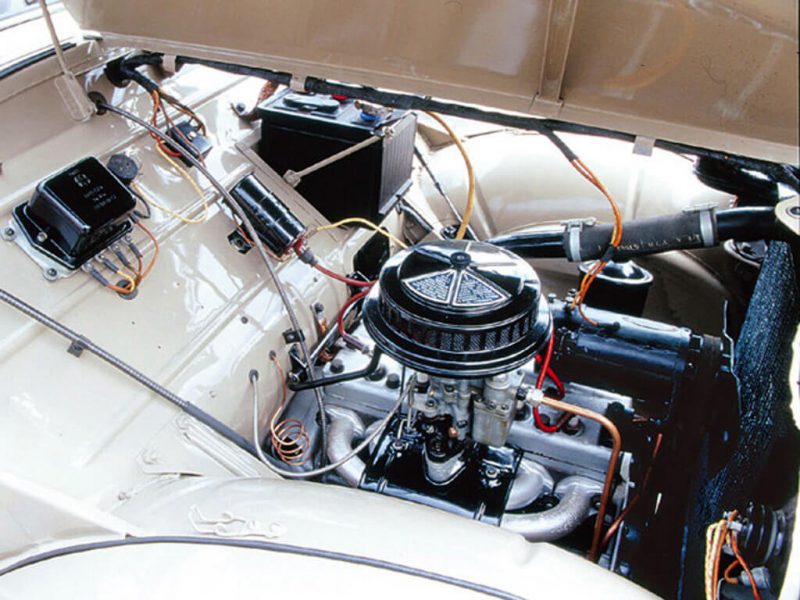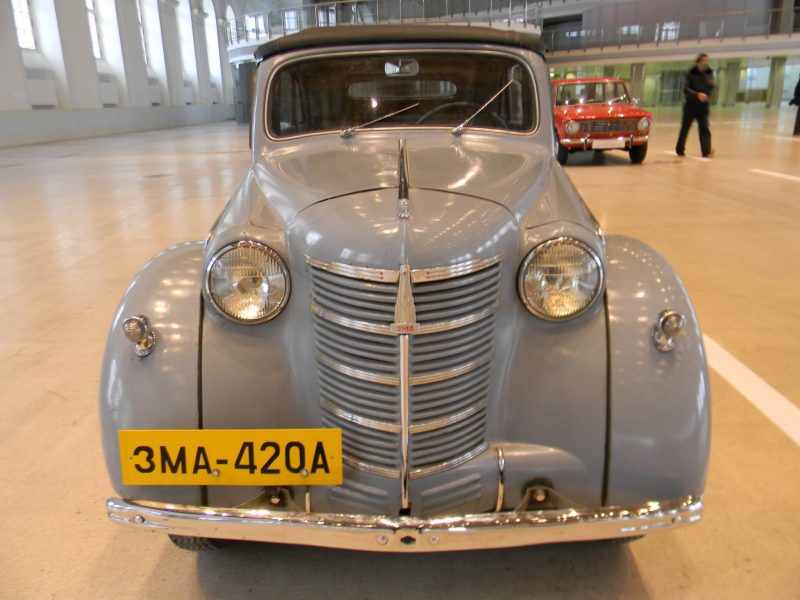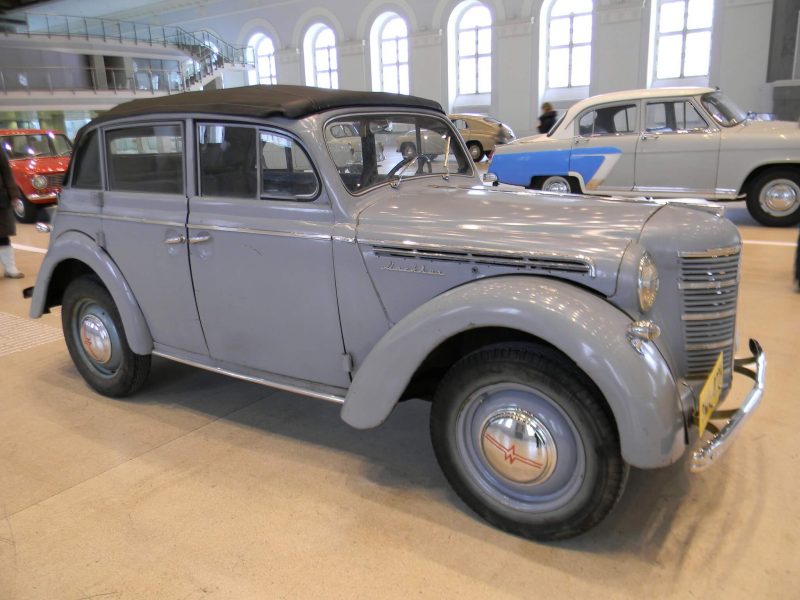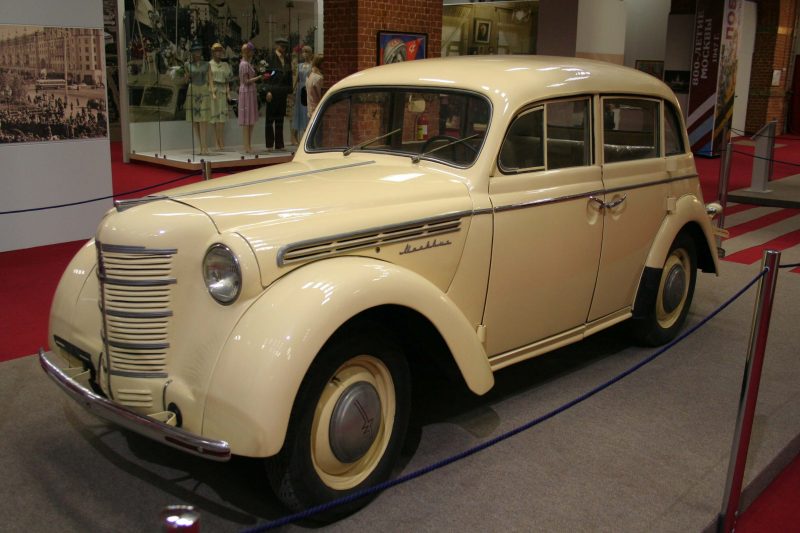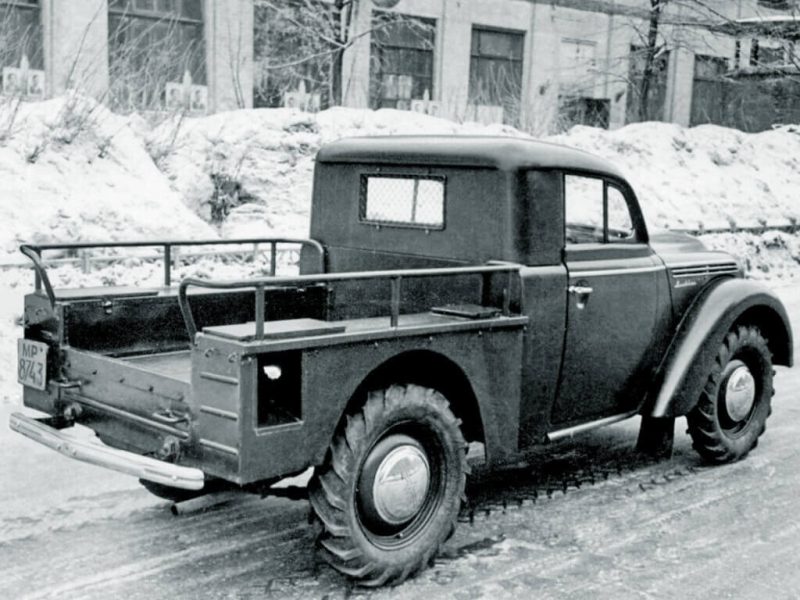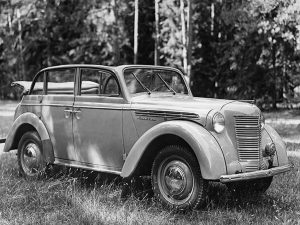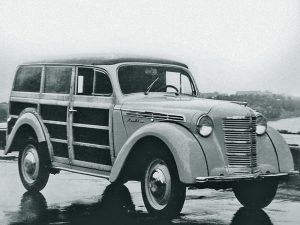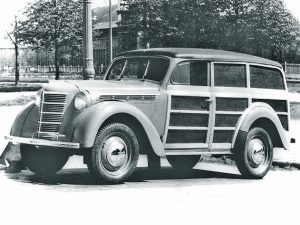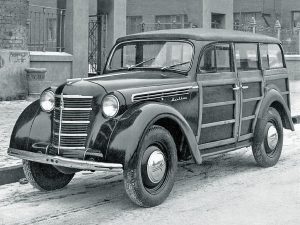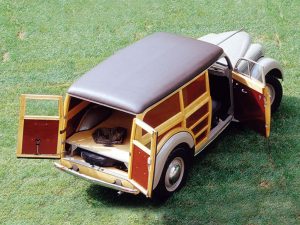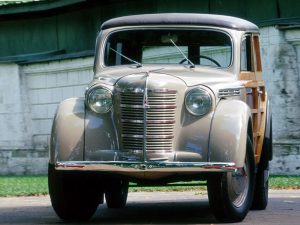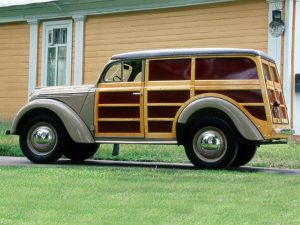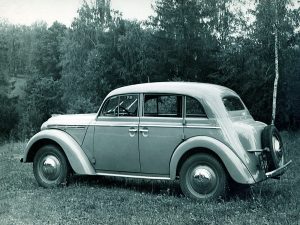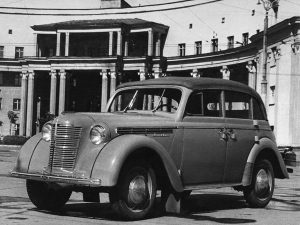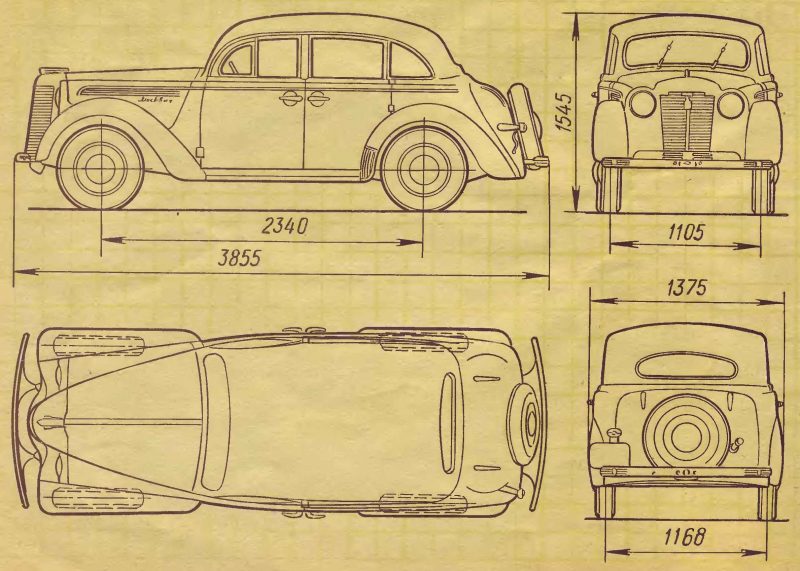Moskvich-400
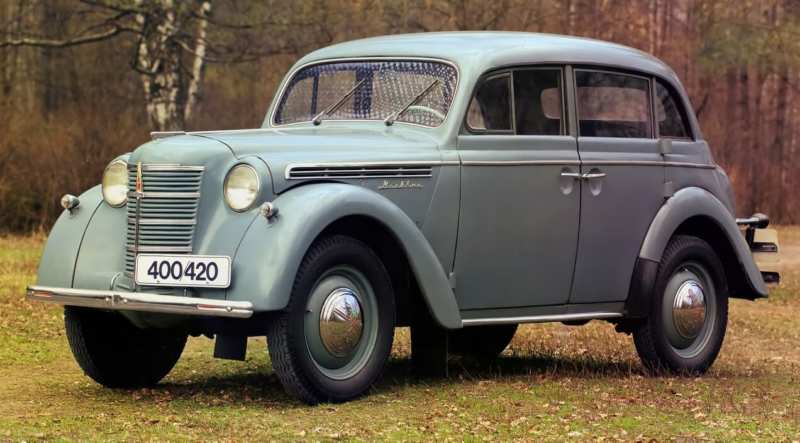
Moskvich-400 is a Soviet machine, which was produced at the Moscow enterprise of small-capacity machines in the period from 1946 to 1954. This vehicle serves as a serial machine of the 1st class in the sedan body. The vehicle was designed for a wide and diverse range of customers. The plant of small-capacity cars was abbreviated as “ZMA”, and after a while – “MZMA”. The whole model range is Moskvich.
Car history
This vehicle was the debut in the Union of Soviet Socialist Republics, which was sold and produced for personal use. A Moskvich 400 convertible and a Moskvich 400 pickup trucks were to be produced. The model was made for individual use. Even before the war, in the 1930s, the country’s leadership realized that the automotive industry already needed to conquer the models of “individual exploitation”.
The idea that a personal vehicle will give citizens of their country too much freedom, then has not yet visited (such a “trend” will appear in the Soviet Union after a while). The motives were different – a personal car could be a great way to encourage ordinary people and could help prepare drivers for agriculture and the army. These arguments were quite weighty, especially given the boom in car growth in Western countries.
On the territory of the Soviet Union ordinary people were almost completely deprived of the opportunity to buy a car. There were, of course, rare exceptions – it was possible to buy a car with the help of a trade union organization (although, there, too, only for significant merits) or it was possible to buy a used vehicle through a commission store.
It was also an opportunity to win a ZIS-101 car in the lottery, but in reality this chance was so small that it could only be considered a theory. All the above mentioned cases can be called single cases. In most cases, the vehicles were “distributed” among organizations, departments and ministries.
In order to design the “people’s” machine, the Economic Council of the Soviet Union in spring (March 1939) decided to issue a decree approving the technical component of the upcoming machine. In 1940, at the enterprise of the Communist International of Youth (KIM, which was later renamed into WMD, and then into MZMA) began production of a small series of KIM-10 machines. As a basis we decided to take an English machine Ford Perfect.
However, the “English variation” failed to go into mass production. At the beginning of 1940 Stalin began to see foreign “similar” cars together with a two-door CMM-10-50. According to Stalin’s decision, they decided to abandon the impractical model and pay attention to the Opel Cadet K38, which had a similar design solution along with the proportions.
However, it was decided to present it only in a 4-door variation, as if it were the way the Soviet small-capacity car should look. This information, by the way, fully disputes the popular story about the post-war review of the 45th year, when Stalin said to the MZMA manager the following phrase: “Sit down and you’re dear”, inviting him to sit on the back sofa, using the back door.
The country’s authorities at the time wanted to release the first “people’s car”, which would be available for sale to all people.
Already by 1945 Stalin got acquainted with the 4-door version of the KIM-10-52 sedan. What was said at the same time and to whom, no one knows, however, the project was not a fate on a fairly objective basis. Due to the fact that the evacuation of the CMM company to the Urals in October 1941 led to the fact that most of the documents and equipment for the production of the machine were lost.
They began to think about analogues, and the decision did not take long – it was decided to take a model of a German sedan “approved” by the leader. They decided to make the most progressive and quite rare variation of the German – with a 4-door body and independent front suspension. However, this “pure copying” entailed its own complications.
Can we consider the debut model of Moskvitch to be fully made, using equipment and documentation, which were removed from the Opel plant in Rüssels-Heim, Germany? This opinion is shared by the popular Yuri Dolmatovsky in his book “I need a car”, and it is worth admitting that this opinion is quite popular. Although, we should not exclude the possibility that the drawings for the car were destroyed because of the bombing, or they could have been hidden by the Germans?
The fact that many of the documents had to be restored almost entirely from the “other world”, as far as the miraculously preserved equipment is concerned, is also evidenced by a well-known source – L. Shugurov in the book “Cars of Russia and the USSR”. If we pay attention to the words of the General Designer of MZMA (AZLK) Andronov, since 1949, many drawings of the 400th model of Moskvich were created in an independent order. This was done by the Moscow Department of the Chief Designer, and all the equipment was made on GAZ and VMS. But how to find the truth?
Perhaps the greatest possible clarity in this case to date can be brought by the memories of Borychev, who was an engineer at MZMA. The Soviet Union had the right to use part of the industrial equipment of the defeated German government. This could include the products of the Rüssels-Heims enterprise, however, the difficulty was that there was nothing to use and nothing to do, because during the hostilities the enterprise did not produce cars.
The plant was working on aircraft parts, and for this very reason it was completely destroyed by the British Air Force during the offensive. Although, something could be found in the hiding places – the equipment for the chassis and body part of the Cadet could survive, however, only in the 2-door version, which was the most popular among the Germans in pre-war time. It was not possible to find any information on the powertrain.
As a result, due to lack of equipment, lack of drawings, several “live” Cadet cars, the Soviet engineers were tasked to assemble the machine for mass production. Moreover, there was a clear deadline – in the debut five years Moskvichi should have already been mass-produced (July, 1946).
It was unrealistic to ask the Americans from General Motors for the missing drawings, which had owned the Opel company since the 29th year, because almost immediately after the war the dreams of the Allies were dissolved by the beginning of the “cold war”. It wasn’t easy to cope on your own. Therefore, it was decided to attract engineers from Germany to the lost knowledge. This was called labor collectives, which consisted of German people, but which were headed by citizens of the Union of Soviet Socialist Republics.
It was created under the start of SVAG (Soviet Military Administration in Germany) in the middle of 1945. As a result, the four-door bodywork version, which includes a wooden master model, along with templates for stamps, was recreated by the Schwarzenberg Design Bureau.
As for the lower-valve power unit, where there was a cast iron block and babbitt bearings, it was able to “reborn” Berlin specialists. It is clear that it was not possible to have time to do everything by the due date, because a considerable amount of time was taken by the “linking” of the returned and redesigned equipment.
Automobile in mass production
Many sources indicate that the debut serial variation of the vehicle was released on the MZMA in winter (December, 4th) 1946 – this day is considered to be the day of the emergence of Moskvich. Nevertheless, there is an assumption that the debut cars of the serial plan were assembled on the night of December 8-9. Despite the different opinions, the whole preparation for the production of the car, taking into account all the difficulties, took only 1.5 years, and the next year 1947 the company was noticeably on the rise.
This year the car got even its own “hasty editorial” – by the day of the 800th anniversary of Moscow it was decided to produce a series of cars with a heraldic shield on the left side of the hood. The debut MZMA car in the post-war period, based on its full designation, was called Moskvich-400-420. According to the figures, it was clear that they indicated the engine and body number. But despite this, the 400th model was called only Moskvich.
And this is understandable, because at that time other models of Muscovite were not in sight. The car turned out to be quite successful – it was technological, nice and reliable, which is important. Although, the model did not shine with the presence of an innovative design, it was sold by some unusual solutions. Quite avant-gardely the postwar public perceived the carrier body, the presence of aluminum pistons of the power unit, hydraulic brakes and, what is very important, an independent suspension of the Dubonnet type, which embodied the real engineering art.
Very strangely enough, but the car did not receive direction indicators, but the windscreen wipers (which were a rare phenomenon in themselves) were and received a mechanical drive from the camshaft of the power unit. At the end of 1947, only about 1501 vehicles could be produced. The following year (1948), this figure already reached 6706 vehicles. As of the 49th year, the figure could grow to 19,806. In a short period of time it was possible to increase the production of sedans up to 35 000 copies per year, after that – up to 50 000 copies.
In June 1953, the car Moskvich-400 came out at the moment of self-repayment, which allowed it to become profitable. In the same year the plant was able to produce 100 thousand models. Only six months later, the total production run was 150 thousand sedans.
As the years went by, the 400th began to receive some improvements. For example, the sedan already had synchronizers at 3rd and 4th speed, a more comfortable (compared to the floor) gear lever on the steering column was installed, and the rear axle bearings were reinforced. In addition, the cylinder block received short dry sleeves, a new head of the block, and the design of the camshaft was changed. The design of the camshaft, two manifolds was changed, the modernization affected the water pump, starter and generator.
All this in 54th year has been issued in updating Moskvich-401, and to be more exact – Moskvich 401-420. The power unit became by 3 horses more powerful (26 horses). Inside the sedan there was used a more “expensive” steering wheel, where there is a colorful plastic rim and a handbrake handle, which has moved after the gearbox shifting lever to the steering column. The last car with the index 401 was assembled on April 20, 1956. Together with Pobeda and 51st lawn Moskovsky sedan was able to significantly change the interior of our country.
Kuzov
The Muscovite was distinguished by the fact that he had a carrying body, while his contemporaries had a frame body. This made it possible to achieve a rather modest weight (855 kg) at a gross weight of 1 155 kg. In the post-war period, the Soviet Union had considerable difficulties with the number of rolled steel and its quality level. Due to the fact that it was impossible to produce a sufficient number of massive roof plates, convertibles were created, which differed from sedans only in the absence of a roof made of metal.
It’s very strange that convertibles with tarpaulin tops were evaluated cheaper. Although, everything is logical – steel is more expensive than tarpaulin. Such bodies have been produced since 1949. It is impossible to say that they were popular, so, 5 years later (in 1954), they decided not to produce them. Just at that moment it was possible to establish the production of roof panels. The vehicle was named 400-420A. Photos of the car have survived to this day.
Machine’s general construction
The 400th Moskvich has a luggage compartment of a small size, but the boot lid, as in standard modern sedan cars, is not. It can be accessed only through the folded back of the sofa, which is installed at the back. Since the beginning of the twentieth century, it has been accepted to believe that it makes no sense to carry luggage in a car, and for hand luggage is enough and such a modest variation.
Door hinges are external. If they are not regularly lubricated, they will soon start to loose and fail. All glasses where it is possible to carry also wind – direct type. Bend the glass so that they do not distort the visibility, at that time it did not work. To make flat glass was much more profitable, and to transport them – much more convenient.
The area of glazing is quite modest, so sometimes it feels as if you are in a tank. But despite all this, the car has a good visibility. If we have already talked about visibility, it is worth mentioning that the installed mirror in the cabin is the only one. And it is so small that it is difficult to see anything in it. Side-by-side design was not provided that, in principle, is quite typical of cars of those times. As we mentioned above, the windscreen wipers were powered by a flexible power take-off shaft.
Such a cable that looks like a speedometer cable. Therefore, the speed of wipers was directly proportional to the number of engine revolutions, which is quite good, because the higher the speed, the more often it is necessary to work with them. It turns out that there was such a sensor of rain mechanical action.
However, there was a spoonful of tar, because as soon as the car moved slowly, if it rained heavily, windshield wipers could not cope with their work. The hood consisted of a pair of halves, each of which opened sideways. This approach can be called quite convenient, because access to the most important devices, which are located at the bottom of the bonneted space, is facilitated. For example, in Zhiguli, to get to the gasoline pump, it is necessary to become in a pose of the dacha worker, who weeds radish, and on Moskviche everything is nearby.
Interior
In order to start the power unit of this machine, the clutch must be depressed using the left foot, the ignition key must be turned and then, using the right foot, the special starter key must be pressed. After that, remove the foot from the starter immediately and press the accelerator pedal. The interior of the four-hundredth model and its upgraded version has neither a radio nor a heater. Wipers function from the work of a special drive, which transmits rotations from the power unit, which indicates some inconvenience.
The front panel is fully metal, as on ZAZ-965, and the sensors are placed slightly to the right of the steering wheel. The steering wheel itself looks massive, especially against the background of a small interior. For example, Zhiguli has the diameter of the steering wheel of 360 mm, and Moskvich-400 – 400 mm. The rear doors opened against the movement, which is clearly visible in the photo.
Inside the car was quite crowded. About some devices that increase the level of comfort, there was no speech, because there was no radio, no heater.
Specifications
Powertrain
For this kind of sedan, we decided to use a four-cylinder carburettor motor, which was not an advanced model in the 1940s, but had an undeniable advantage over the latest power units in terms of reliability and simplicity of construction. Moreover, the lower valve design is considered less noisy.
If we talk about the motor volume, it is equal to 1.74 liters. All this allows it to develop up to 23 horsepower. The gasoline pump has a beautiful glass cover, which allows you to observe the process of pumping fuel. Its disadvantage is that it can often overheat.
This was not a fatal consequence, but it was necessary to wait until it cooled down, as it stopped pumping fuel when overheating. In general, overheating of gasoline pumps is considered to be a pedigree disease of all Moskvich cars, as this problem could not be eliminated until the end of the company. The easiest way to combat overheating is to use a wet cloth on a gasoline pump, because during evaporation the liquid cools down.
Speaking in general, the cast iron power unit is quite simple, reliable and unpretentious to the quality of fuel, which was an important factor for those conditions in which the car was used. All mechanisms, except for the cylindrical piston group, as well as the hydraulic fracturing machine, were external, to which can be attributed the pump (water pump), which was attached to the block of cylinders. Its drive was carried out by means of a belt.
Motor was enough to reach a speed mark of 90 km/h with a sedan. Taking into account the fact that there was simply no quality road surface, it was enough with the head. For every 100 kilometers the Soviet car consumed about 7 liters at a speed of 60 km/h. In reality, the car consumed 8-9 liters of gasoline for every 100 kilometers. The fuel tank had a volume of 31 liters.
Transmission
As a powertrain synchronizer and drive wheels decided to install a three-speed manual gearbox, where there were no synchronizers. Unfortunately, it did not provide an opportunity to realize even the most modest potential of the engine. The gear ratios of the neighbouring speeds were too much apart. Due to the lack of synchronizers, the so-called “double clutch” had to be used to equalize the angular speeds of the gearbox shafts.
The main gear had a bevel type and produced a warring sound. It is clear that all these drawbacks were the reason for the low cost of the gearbox, and the machine in general, which from the beginning should have been in serial order. Therefore, any increase in price was critical, and shortcomings in the operation of the machine were secondary.
Suspension. The simplest bridge was installed on the back, which was suspended from semi-elliptic springs. This type of suspension was common to all Moskvich rear-wheel drive vehicles. But, as for the independent front suspension of the Dubonnet type, which was named after a car racer from France, became quite interesting. When the wheels were suspended, they used longitudinal levers instead of transverse ones, which raised the kinematics of the suspension. And this, in turn, improved the driving stability of the car. The lever had an impact on the spring, which was in a container with a cushioning fluid.
The advantage of such a suspension is that it had a fairly small price in production, and was also compact. Moreover, there was no need to adjust the wheel breakdown. It’s a pity, but it was not possible to provide a confident resource for any manufacturers. Through the looseness in the area of the lever entry soon enough began to leak fluid, which entailed the failure of the shock absorber. Also, during braking the car felt strong “pecking”, although, for a not very sharp sedan, it was not a major drawback.
Brake system
If we talk about the first half of the twentieth century, the most common types of braking systems were mechanical drive. Very often the drive itself included the presence of a complex scheme of traction, cables, there were also equalizers, which needed constant attention and adjustment, but they still do not guarantee even braking. Very often it was so that the car could just walk away. With increasing speed, this situation was already very dangerous.
Despite the fact that the hydraulic drive needed an improved form of output, it was simpler during maintenance, and most importantly – safer, because the fluid was equally transmitting pressure in all directions. Moskvich-400 received just the presence of hydraulic brakes, which was advanced in those years. However, the braking system is not interesting in this. The drum, along with the hub and wheel rim, is one cast iron part.
It was put directly on the front hub bearing and the rear axle neck of the peninsula. The tire was put not on the disc in the standard sense, but on the rim, which had already been mounted to the disc, drum, step. Such brake designs, along with the suspension, provided a fairly small value of unsprung masses.
Rail steering. Moskvich did not have a hydraulic power steering installed. However, despite this, the steering wheel is light enough if it is not twisted when the car is standing still. The steering wheel itself is very big and not quite comfortable.
Electric system
The on-board network had 6 volts. They installed a battery pack ZSTE-65, as well as a generator G-28 and starter ST28. The cars of the debut year of production had starters of the famous Bosch company. Very unusual, but the radiator cooling fan was initially mounted on the axis of the generator. After a while, we decided to abandon this method, as there was an excessive load on the generator bearings. In terms of power, the generator produced only 100 watts.
It wouldn’t be enough for a modern car even to power a pair of headlights, but on the 400th, besides the headlights and one rear headlamp, there was no more consumption, so there was enough power. In reality, during a short ride, the chance to land the battery was considerable, so drivers often used a “curve” starter – the starter handle. It is good that the engine was low-forced, so it did not require much effort to start it.
| Kuzov | four-door sedan |
| Number of doors | 4 |
| Number of seats | 4 |
| Length | 3855 mm |
| Width | 1400 mm |
| High | 1555 mm |
| Wheelbase | 2340 mm |
| Far | 1105 mm |
| Rearring Gauges | 1170 mm |
| Traffic clearance | 190 mm |
| Motor position | front longitudinally |
| Motor type | 4-cylinder petrol carburetor four-stroke |
| Motor volume | 1100 cm3 |
| Power | 23/3600 hp at rpm |
| Torque | 54/2000 N*m at rpm |
| Valves per cylinder | 2 |
| Gearbox | three-step |
| Suspension front | independent, lever, on two helical inclined cylindrical springs with swinging of wheel levers in longitudinal plane |
| Rear suspension | on two longitudinal semi-elliptic leaf springs |
| Shock absorbers | single-acting hydraulic piston pistons |
| Brakes front/back | hydraulic drums |
| Fuel consumption | 8 l/100 km |
| maximum speed | 90 km/hour |
| drive type | back |
| charged mass | 850 kg |
Modifications
- Moskvich-400-42 – was produced from 1946 to 1953. It is a four-door sedan;
- Moskvich-400-420A – was produced in the period from 1949 to 1954. It is a four-door cabriolimousine (there was an open top body);
- Moskvich-400-420K – represented a chassis for mounting various bodies;
- Muscovitch-400-420M – served for home health care. From the 400-420th model, it was sold only with identification marks;
- Moskvich-401-420 – was produced in the period from 1954 to 1956 and represented a modernized version of the sedan;
- Moskvich-400-422 – the machine was produced from 1954 to 1956. The car had a wooden van.
In total, the plant was able to produce 216006 cars in sedan version, 17742 cars, 11129 vans, 422 and 2562 pickups and 420B van, respectively. Muscovite 400 tuning – there are many examples of such improvements on the Internet.
Pluses and minuses
Pluses cars
- Appceptable ground clearance height;
- Maximum speed is 90 kilometers per hour;
- First “people’s” car;
- Has German roots
- There are wipers;
- Comfortably opening hood;
- There are different modifications;
- Pretty low cost of sedan;
- Nice front suspension.
Cons of a car
- Large machine weight;
- No hydraulic power-assisted steering and braking system mechanisms;
- No hydraulic power-assisted steering and braking
- Large steering wheel;
- Not adjustable seats and steering column
- Incomfortable work of wipers;
- Weak powertrain;
- Indelicate gearbox;
- Pretty high fuel consumption;
- Inside the car there is no heater or even radio
- Close salon;
- All the details were saved;
- Small baggage compartment;
- weak battery;
- Small fuel tank;
- Bad visibility.
We sum up
Summing up the results of the first Soviet “people’s” car Moskvich-400, I would like to say that the model turned out to be quite successful and mass. It turns out that the tasks of the Soviet Union leadership were fulfilled. It is clear that there may still be disputes about whose vehicle the vehicle is actually, what its roots are – German or Russian. However, after the bombardment of the plant, all the drawings of the car could have gone missing, and people might not have seen the car.
Probably, it is necessary to tell that thanks to experts, it was possible to embody that German professionals did not have time to make at the automobile enterprise Opel. In fact, the 400th one turned out to be a mass-produced one, as a lot of cars were sold in different body variations. It is clear that this sedan cannot be called comfortable and convenient, however, it should not be forgotten that it was estimated much lower than its direct competitors.
The rear suspension of the vehicle was quite standard, but the front was given a Dubonnet suspension, which was, at that time, one of the newest and most technologically advanced. However, the frankly weak engine, an underdeveloped gearbox, along with the lack of hydraulic steering and braking system, made the machine very difficult to use. Inside the cabin there was not much space, and in winter, and there was often freezing there, because there was no heating system.
Even the simplest janitors worked in a strange and inefficient way, which caused inconvenience. But, nevertheless, Moskvich 400-th forever remains in history as the first inexpensive sedan for ordinary people, who, in principle, quite well coped with their duties. After all, at that time, there were no quality roads in the country (it seems that they could not be done so far), and the car itself was not a racing car. That’s why the Soviet sedan became a good beginning of “experience” of the automobile plant in Moscow.
We advise you to read the article: “History of the car “Moskvich” and AZLK enterprises


